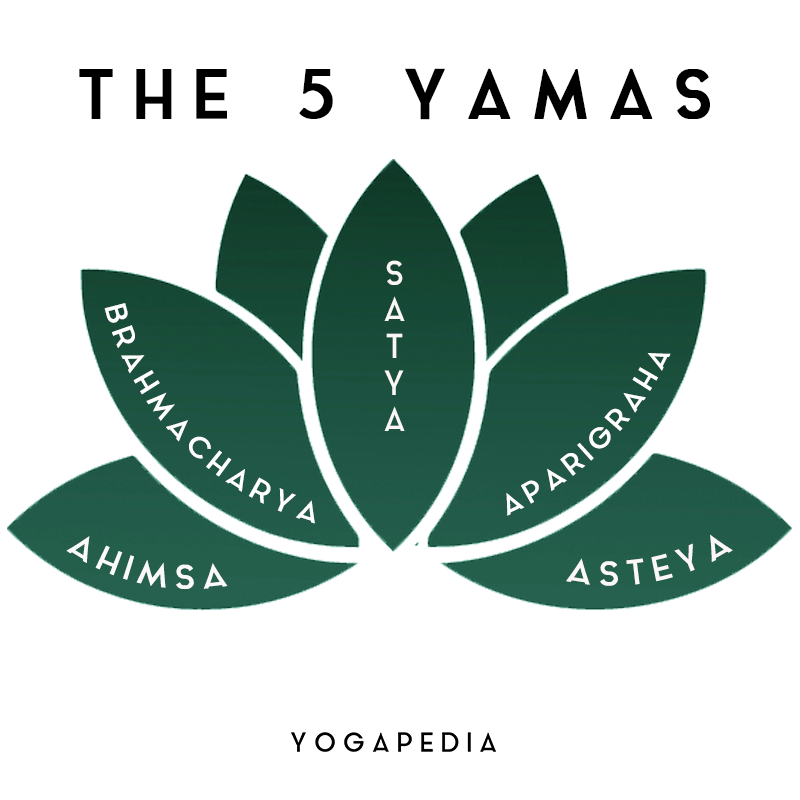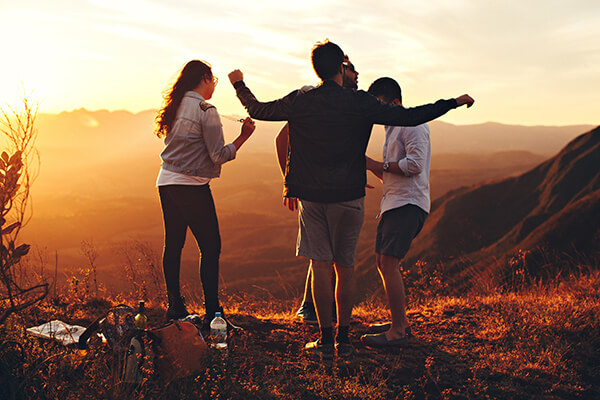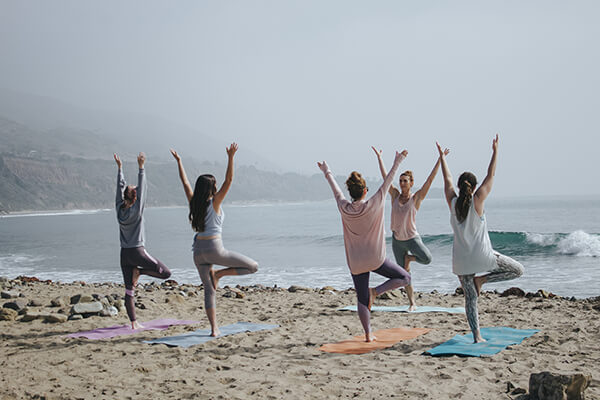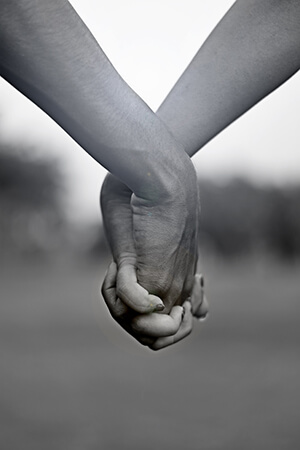Yoga is undoubtedly an individual pursuit. The practice is personal, and although we follow the same path, each person’s journey is ultimately unique.
Yet, even when practicing alone, there’s a pervading sense of connection to a wider community, united by a shared love of yoga.
The power of this connection is almost tangible in a group class, when your breath and movement is synchronized harmoniously with others around you.
Sharing the practice with likeminded people is not only uplifting for the soul, but community fosters a whole host of benefits for our health and well-being, both mental and physical.
In a world where digital communication has become the norm, cultivating true connection is more important now than ever before.
The desire to connect with others is a fundamental part of the human experience.
Whether we like it or not, we are hard-wired to crave and seek a sense of belonging.
This biological reassurance is the driving force behind the many roles and relationships in our lives, and the bonds we create with others undeniably accelerate growth and development.
Research has demonstrated that social support increases survival and longevity by some 50%. Holt-Lunstad and Smith’s meta-analysis of 148 studies found that not only is the risk of mortality from loneliness in the same category as smoking 15 cigarettes a day, but the benefits of community and interpersonal social networks are as important to physical health as beating obesity.

Community is clearly as nourishing for body and mind as yoga is itself, and the common ground doesn’t end there.
Just like yoga, community is about connection and unity. Merge the two together and their power is amplified, allowing us to feel safe and supported in our journey, regardless of whether or not it’s a solo one.
In fact, it’s impossible to separate community and yoga; whether you’re practicing alone or in a hoard of hundreds, you are part of a worldwide network of likeminded and beautiful beings, whose connection transcends imagined boundaries of race, religion or nation.
This is one of the many incredible things about yoga; that something so personal can unite so many people.
Diminishing Ego
By its very nature, community diminishes ego. This is particularly pertinent when it comes to the yoga community, as it’s built on a foundation of seva, or ‘selfless service’. (Learn more in There's Another Yoga World Out There and I Just Found it.)
Seva requires us to set our ego aside, and to see the interdependent, interconnected nature of all beings.
The realisation that we are all part of the same whole tends to dissolve a sense of separate self, allowing us to switch individual ego for collective consciousness. (Learn more in How to See the Ego for What it Is.)

With this comes a sense of union, nurturing humility, respect and gratitude, qualities that have an immensely positive impact on our social ties.
In essence, the yoga community sparks a cycle of social benefits, sustainably nourishing itself to grow from strength to strength.
Cultivating Compassion
With interconnectedness comes compassion. The Yoga Sutras even prescribe social observances to live a more compassionate life, in harmony with the world around us.
Known as yamas, these five ethical guidelines make up the first limb of Patanjali’s Eight Limbed Path of yoga, providing the very foundation for the practice.
The five yamas are: Ahimsa (non-violence), Satya (truthfulness), Asteya (non-stealing), Brahmacharya(moderation or right use of energy) and Aparigraha (non-greed). (Learn more in The 5 Yamas According to Patanjali.)

With guidelines like these, it may come as no surprise that the yoga community is renowned for cultivating compassion.
These qualities prime us not only for making new friends, but for strengthening existing ties. When we regulate ourselves in this way, our interactions flourish.
We become more responsive to our environment and the people in it, less reactive and more thoughtful.
What’s more, yoga asks us to be fully present, a skill that is slowly being eroded by modern living. Nowadays, most of us are so busy that we lack the focus required to truly listen to others.
Yoga nurtures this presence of mind and the ability to connect, both of which are vital for maintaining healthy relationships. (Learn more in Expansion Through Appreciation.)
Shared Experience
Community tends to be where we seek comfort in difficult times, and surrendering to the energy of a group establishes feelings of safety and trust.
The yoga community in particular encourages the spirit of sharing, offering a safe space for expression that is perhaps buoyed by the peace of mind instilled by the practice.
Sharing experiences with others is an important part of any healing process, as it creates a sense of perspective that is often inaccessible alone.
After a group class of asana, meditation or chanting, it tends to be easier not only to access feelings and emotions, but to express them without fear of judgement. (Learn more in 4 Reasons Why You'll Want to Meet Up to Meditate.)

In sharing your experience with teachers and students alike, more often than not you will find that there is someone else going through the same things as you.
Similarly, you may find that someone else is able to put words to something you’d been struggling to express, or speaks a truth that sparks a reflection in yourself.
In practicing yoga, you become part of an ancient and sacred sharing circle, and actively taking part in this communion reminds us that we are never alone.
Having this bond imparts an even deeper and valuable sense of belonging, allowing us to support one another throughout the rollercoaster of life.
Inspiration & Motivation
As well as shared experience, being part of the yoga community connects you with people who share your aspirations and perspective on life. (Learn more in Yoga Is for Every Body.)
Whether you are transitioning through poses in unison or alone, knowing that you are working with others toward a common goal provides a certain comfort.
This can be hugely motivating; not only can we learn a great deal from one another, but we can inspire one another in our practice.

The yoga community encourages us to try new things, to reach new goals and ultimately to keep coming back to the mat. (Learn more in 4 True Purposes for Why We Practice Yoga Asana.)
When we look to one another for inspiration and motivation, we can breathe new life into our practice, helping us to maintain freshness and enthusiasm.
Being part of a community undoubtedly accelerates growth and development, empowering you to be spurred on by the progression of those around you.
Stronger Together
The benefits of sharing yoga with likeminded people go way beyond the mat. Communities are rich in resources, and pooling together collective skills makes us stronger together.
One person’s strengths will always be another person’s weaknesses and vice versa, so there is great potential to be found in working together.
To be part of a community also requires some element of responsibility, the ability to put in as much as you get out, and the desire to create positive energy for those around you. (Learn more in Satsang: Gather in the Company of Truth for an Uplifting Spiritual Practice.)

This is how communities grow, and there is power in this union.
Each of our local yoga tribes connect to a much broader community, and if we harness the power of this connection with the compassion inspired by yoga, it is truly possible to influence positive change in communities outside of our yoga sphere.
Through newsletters, social media pages, events and gatherings, we are now lucky enough to have an abundance of platforms through which to share individual perspectives on this sacred practice.
If we choose to use it, this really is an infinitely bountiful resource for development and positive transformation, both in ourselves and the world around us. (Learn more in 6 Parts of the Yoga Lifestyle You Might be Overlooking.)
United as One
Yoga may well be an individual path, but as with any good journey, it’s made better by encountering inspirational people along the way.
Cultivating a sense of connection within a community is essential for our well-being, and helps us to live more compassionate and inspired lives.

After all, it is within others that we are able to most clearly see ourselves.
Without community, it’s easy to feel isolated and disengaged. But when we surround ourselves with like-minded and uplifting people, our shared experience builds strength and encourages growth.
The coming together of people of all cultures, backgrounds, shapes and sizes to find union in yoga ultimately has the power to influence a wave of positive change in communities across the world. (Learn more in Yoga for Everyone: The Top Organizations Making Yoga Accessible for Every Body.)
Even when we feel alone, this connection reminds us that we are always together, united as one.
During These Times of Stress and Uncertainty Your Doshas May Be Unbalanced.
To help you bring attention to your doshas and to identify what your predominant dosha is, we created the following quiz.
Try not to stress over every question, but simply answer based off your intuition. After all, you know yourself better than anyone else.